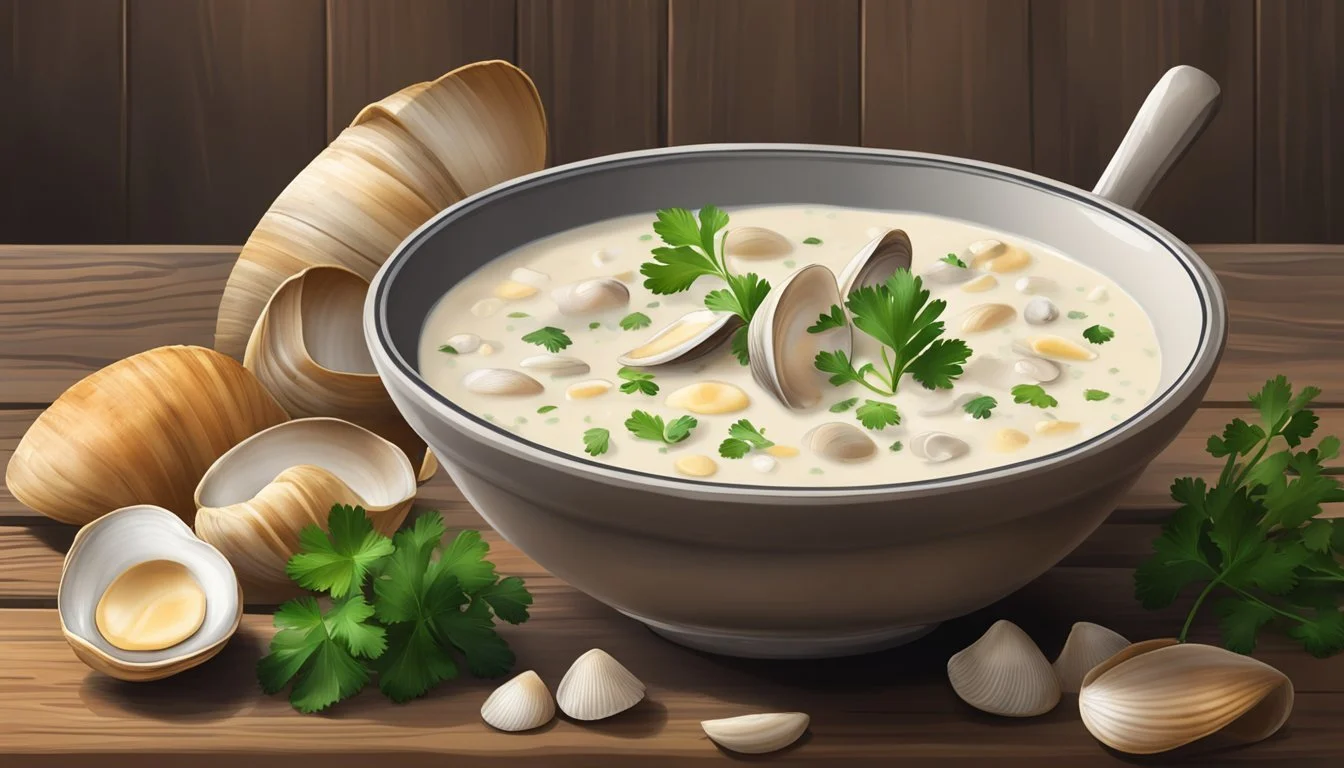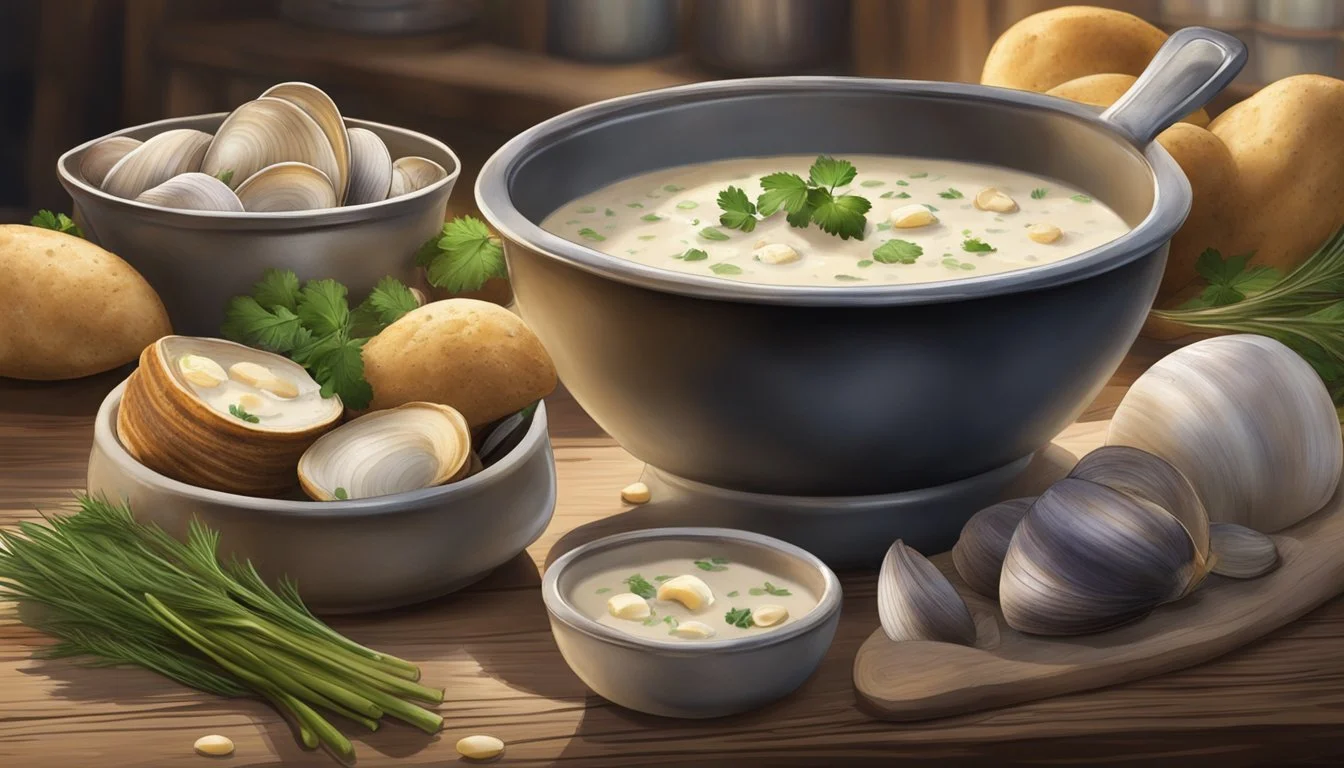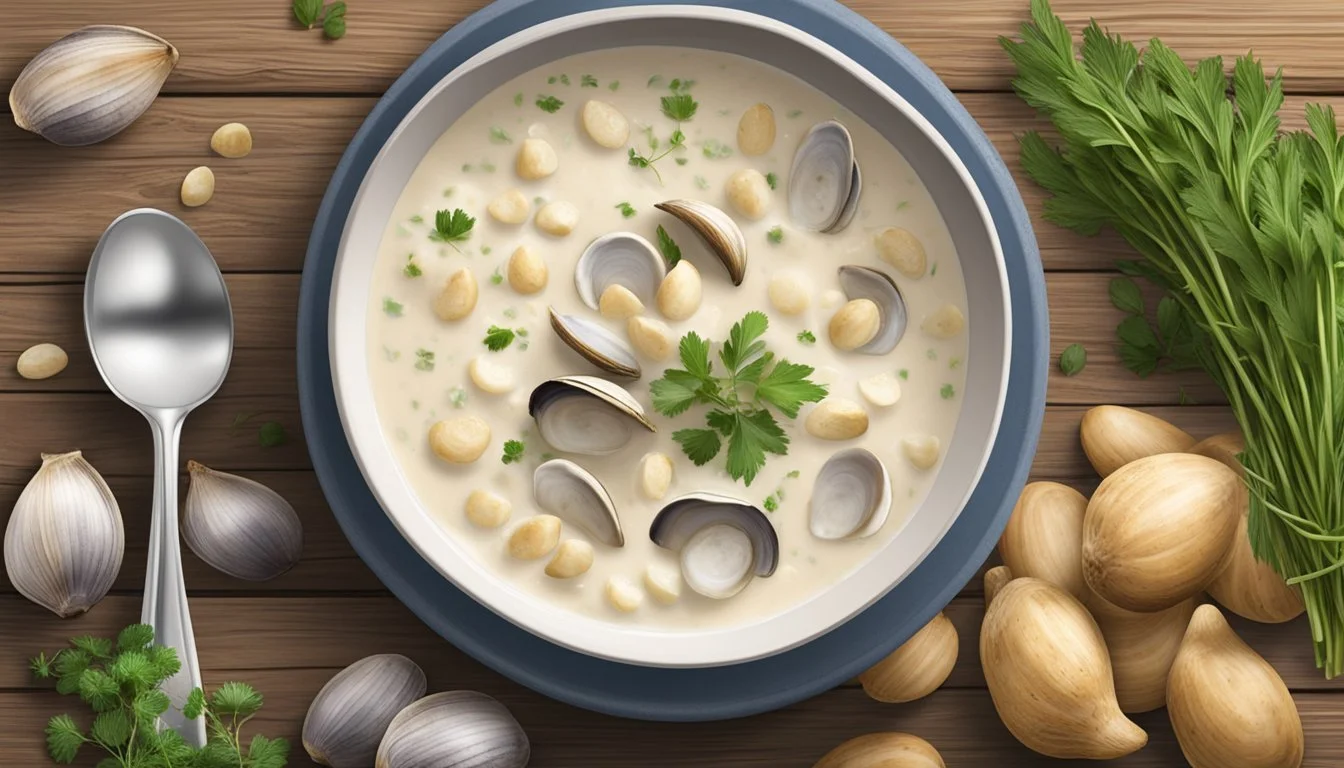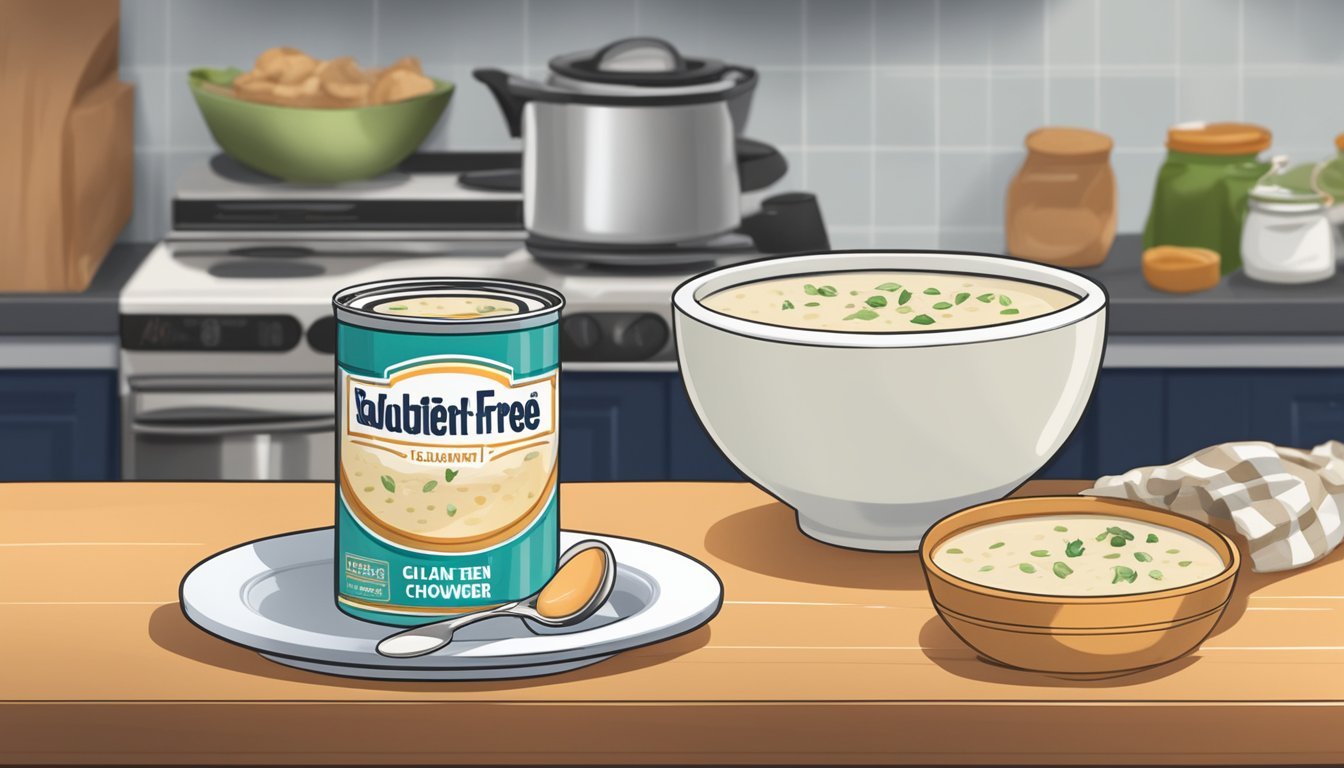Is Clam Chowder Gluten-Free?
Unveiling the Truth About This Classic Soup
Clam chowder traditionally hinges on a mixture of clams, (What wine goes well with clams?) potatoes, onion, and celery, enrobed in a rich and creamy base, a comfort food staple especially revered in New England. However, for those adhering to a gluten-free diet due to celiac disease, gluten intolerance, or other health reasons, the question of whether clam chowder is gluten-free is of significant importance. The thickening agent used in the soup often contains gluten, as classic recipes call for wheat flour to create the creamy consistency associated with this hearty dish.
Crafting a gluten-free version of clam chowder is entirely feasible and does not require compromising on taste or texture. Gluten-free flours such as rice, cornstarch, or potato starch serve as excellent substitutes for wheat flour. Furthermore, when preparing a gluten-free chowder, meticulous attention is essential to ensure all ingredients, including the stock and any additional seasonings, are free of gluten.
As more individuals opt for a gluten-free lifestyle, restaurants and ready-made food manufacturers are increasingly offering gluten-free options which sometimes include clam chowder. Nonetheless, it remains crucial for consumers to verify the gluten-free status of these offerings, as cross-contamination or the use of gluten-containing ingredients can still pose a risk. Homemade gluten-free clam chowder provides an alternative with controlled ingredients to ensure compliance with a gluten-free diet.
Understanding Gluten in Foods
When examining whether a food is gluten-free, it's essential to understand what gluten is and where it's commonly found. This knowledge is particularly crucial for individuals with celiac disease or gluten sensitivity who must avoid gluten to prevent health complications.
What Is Gluten?
Gluten is a group of proteins present in certain grains. It acts as a binder, holding food together and adding a "stretchy" quality. Typically found in wheat, barley, and rye, gluten is a common ingredient in bread, pasta, and many processed foods. For individuals with gluten sensitivities, ingesting gluten can trigger adverse reactions ranging from digestive discomfort to severe intestinal damage, as seen in celiac disease.
Common Sources of Gluten
The most ubiquitous sources of gluten come from the grains wheat, barley, and rye as well as any derivatives of these grains. Here’s a brief list of items that commonly contain gluten:
Grains: Wheat, barley, rye, spelt, kamut, and triticale.
Bread Products: Breads, pastries, cakes, pies, and croutons.
Pasta and Noodles: Traditional pasta, couscous (What wine goes well with couscous?), and ramen.
Other Processed Foods: Many cereals, soups (What wine goes well with soups?), sauces, and salad dressings.
Ingredients to watch for that indicate gluten presence:
Flours: Plain flour, self-rising flour, and others made from gluten-containing grains.
Malt Products: Malt vinegar, malt extract, and malt syrup.
When it comes to preparing gluten-free foods, identifying all ingredients and potential sources of gluten is critical. Gluten-free recipes often utilize alternative flours, such as rice flour or almond flour, to replace traditional wheat flour. Understanding gluten and its common sources allows consumers and chefs alike to make informed choices for gluten-free diets.
The Basics of Clam Chowder
Clam chowder is a hearty soup that has a rich history within American cuisine, particularly in the New England region. It is traditionally cream-based and brimming with tender clams, making it a staple seafood dish.
Traditional Clam Chowder Ingredients
A standard clam chowder boasts a creamy texture and a delicate balance of flavors, achieved by incorporating a variety of ingredients. Here is a basic list of traditional components found in clam chowder:
Clams: The star of the dish, offering a briny, oceanic flavor.
Potatoes: Typically diced, adding a starchy component that helps thicken the soup.
Onions: Sautéed onions serve as a foundational element contributing both sweetness and aroma.
Bacon: Often included to inject a smoky, savory element.
Cream: Heavy cream provides a rich, smooth base for the chowder.
Milk: Sometimes used in conjunction with cream to adjust the soup's thickness and richness.
Butter: Generally used for sautéing ingredients at the onset, enhancing the chowder's flavor profile.
These ingredients come together to form a harmonious blend, each component playing its part to perfect the chowder's flavor and consistency.
Variations of Clam Chowder
While the traditional New England clam chowder is well-known, variations of the dish exist that introduce different flavors and ingredients. Some notable variations include:
Manhattan Clam Chowder: Utilizes tomatoes, giving the soup a tangy flavor and a distinctively red coloration.
Rhode Island Clam Chowder: Known for a clear broth, omitting dairy altogether for a lighter soup.
Pacific Northwest Variations: May include local ingredients like salmon or other seafood to reflect regional preferences.
Despite the variations, each type of chowder aims to highlight the tender clams while providing a comforting and satisfying experience. The core of clam chowder remains consistent, with regional twists adapting the dish to local tastes and available ingredients.
Gluten-Free Clam Chowder Ingredients
Creating gluten-free clam chowder requires careful selection of ingredients to avoid gluten while maintaining the rich, comforting flavor the dish is known for. Below are the specific ingredients needed for gluten-free cooking, as well as suitable thickening agents to achieve the creamy texture characteristic of clam chowder.
Safe Ingredients for Gluten-Free Cooking
A gluten-free clam chowder starts with ingredients that are naturally free of gluten. These items are essential in replicating the traditional flavors without compromising dietary restrictions:
Clam juice: It serves as the seafood base of the chowder.
Olive oil: Used for sautéing vegetables; a gluten-free alternative to butter for those who are dairy-free.
Russet potatoes: These starchy vegetables help thicken the soup and add body.
Heavy cream or half and half: These dairy components add creaminess. One should ensure that they do not contain gluten-containing additives.
Bay leaves: Provide aromatic depth to the chowder.
Gluten-Free Thickening Agents
Traditional clam chowder often uses flour as a thickening agent, which contains gluten. Here are gluten-free alternatives:
Cornstarch: A common thickener that, when mixed with a cold liquid to create a slurry, can be added to the chowder to achieve the desired viscosity without adding gluten.
Gluten-free flour blends: When using a gluten-free flour blend, it is crucial to ensure it only contains gluten-free starches like rice flour, tapioca starch, or potato starch, and does not contain gums or other gluten-containing ingredients.
When shopping for ingredients like heavy cream or half and half, one must carefully check labels for hidden sources of gluten. Gluten-free clam chowder can be just as rich and comforting as its traditional counterpart with the right substitutions and attention to detail.
Preparing Gluten-Free Clam Chowder
Creating gluten-free clam chowder involves a mindful substitution of ingredients to maintain the traditional flavors and creamy texture without the gluten. A keen focus on gluten-free thickening agents and careful monitoring of cooking times ensures a delicious result.
Step-by-Step Instructions
Select Gluten-Free Thickening Agents: Opt for cornstarch, potato starch, or a gum-free rice flour blend to thicken the chowder. Ensuring these do not contain any gluten-containing additives is crucial.
Sauté Aromatics: Begin by cooking onions and celery until they're soft. This should take about 4 minutes.
Incorporate Flour: Add the chosen gluten-free flour to the sautéed vegetables and cook for an additional 2 minutes, stirring continuously to combine well.
Cook the Potatoes: Boil potatoes until tender, which typically takes about 8 minutes. Reserve the cooking water, as it can be added back into the chowder.
Combine Liquids and Seasonings: Mix milk, gluten-free stock, and seasonings such as bay leaf, salt, and pepper. Cook until they form a harmonious base for the soup.
Add Clams: Integrate clams into the mixture towards the end of the cooking process to avoid overcooking them, as they only need a few minutes to heat through.
Thicken the Chowder: If using cornstarch, create a slurry by mixing it with a bit of cold milk before adding it to the soup to avoid clumps.
Cooking Time Considerations
Prep Time: Gathering and preparing ingredients typically takes about 15 to 20 minutes.
Cook Time: The chowder requires simmering on a low to medium heat with a time frame of about 30 minutes to blend the flavors and achieve the right consistency.
Total Time: Expect about 45 to 50 minutes from start to finish. This duration includes both preparation and cooking to create a comforting gluten-free clam chowder.
By following these specific steps and time considerations, one can prepare a gluten-free clam chowder that does not compromise on the traditional creamy texture and rich flavor.
Customizing Your Clam Chowder
When crafting a gluten-free clam chowder, one can easily tailor it to dietary needs and flavor preferences. The versatility of New England clam chowder allows for dairy-free options and an array of additional flavor enhancements to suit any palate.
Dairy-Free Options
For those avoiding dairy, traditional cream bases can be replaced with a variety of non-dairy milks. Unsweetened almond milk, coconut milk, or soy milk can serve as excellent alternatives. It’s important to consider the flavor profiles of these milks; coconut milk adds a tropical essence that may complement the seafood, while almond and soy milk offer a more neutral base. One can thicken the chowder using dairy-free alternatives to cream such as cashew cream or a roux made from gluten-free flour and olive oil.
Dairy-Free Milk Alternatives:
Unsweetened almond milk
Soy milk
Thickening Agents:
Cashew cream
Gluten-free flour roux
Additional Flavor Enhancements
Enhancing the flavor of gluten-free New England clam chowder can make it just as satisfying as its traditional counterpart. Consider adding fresh thyme or parsley for an aromatic touch. These herbs not only contribute to the visual appeal but also add a fresh, earthy flavor. To elevate the seasoning profile, incorporate smoky bacon renders for a rich depth of flavor, or garnish with crisp bacon bits for added texture.
Herbs for Freshness:
Fresh thyme
Parsley
Seasoning & Garnish:
Smoked bacon render or bits
Gluten-Free Clam Chowder Nutrition
When considering the nutrition of gluten-free clam chowder, it is essential to understand its caloric content and potential for providing a healthy meal option through the selection of alternative ingredients.
Caloric and Nutritional Information
Gluten-free clam chowder typically provides a rich array of nutrients, while the absence of gluten-containing flour facilitates a suitable option for those with gluten sensitivities or celiac disease. The use of potatoes, clams, and vegetables in the soup contributes essential vitamins and minerals. A standard serving size of homemade gluten-free clam chowder can range from 200 to 300 calories, making it a reasonable option for a meal that can fit into a balanced diet.
It's important to consider the nutritional content of the soup, which usually includes, but is not limited to:
Protein: Clams are a high-quality protein source, vital for muscle and tissue repair.
Carbohydrates: Potatoes provide a source of complex carbohydrates for energy.
Vitamins and Minerals: Ingredients like celery and onions contribute essential vitamins and minerals.
Nutrient Approximate Amount per Serving Calories 200-300 Protein 10-20g Carbohydrates 15-30g Dietary Fiber 2-4g Sugars 2-5g Fat 8-15g Saturated Fat 3-6g Cholesterol 30-60mg Sodium 300-600mg
Healthy Alternatives
To make gluten-free clam chowder healthier, cooks can opt for low-calorie milk alternatives such as almond milk or coconut milk, reducing the overall fat content while maintaining a creamy consistency. Almond milk, for instance, is both low in calories and fat, yet high in vitamin E. Coconut milk provides beneficial fatty acids that are different from those found in animal products.
One can also increase the nutritional value by incorporating a variety of vegetables or choosing leaner cuts of bacon to reduce saturated fat content. Utilizing herbs and spices for flavor can help decrease the reliance on salt, making for a heart-healthier version of the traditional chowder.
Storing and Reheating
When it comes to preserving the freshness and flavor of clam chowder, proper storage and reheating techniques are essential. Below are specific tips and best practices tailored for clam chowder storage and reheating.
Refrigeration and Freezing Tips
Once clam chowder has cooled to room temperature, it should be transferred to an airtight container to maintain quality and prevent contamination. In the refrigerator, the chowder will keep for up to 3-4 days. For freezing, portion the chowder into freezer-safe bags or containers, leaving some space to accommodate expansion as the liquid freezes. Frozen clam chowder can last for about 1-2 months in the freezer. It's recommended to label containers with the date of freezing.
Refrigeration Tips:
Cool chowder to room temperature before refrigerating.
Store in airtight containers to keep out moisture and other contaminants.
Consume refrigerated chowder within 3-4 days for best quality.
Freezing Tips:
Leave enough headspace in containers when freezing clam chowder.
Thaw in the refrigerator overnight before reheating.
Use frozen chowder within 1-2 months to enjoy its best qualities.
Best Practices for Reheating
Reheating clam chowder properly ensures that it remains a comforting and enjoyable comfort food. For both stovetop and microwave reheating, the key is to warm the chowder slowly and stir frequently to prevent scorching and separation. When using a microwave, cover the container and use a low-power setting, stirring every minute. On the stovetop, reheat the clam chowder in a saucepan over medium heat, stirring occasionally, until it reaches 165°F, which is the safe temperature to destroy any potential bacteria.
Stovetop Reheating:
Reheat on medium heat, stirring occasionally.
Ensure chowder reaches an internal temperature of 165°F.
Microwave Reheating:
Cover and use a low-power setting to reheat evenly.
Stir regularly to prevent overheating certain spots.
Serving and Presentation
When serving clam chowder, presentation augments the dining experience. Specific garnishes and pairings are chosen to complement the creamy texture and rich flavor of gluten-free clam chowder.
Recommended Garnishes
Chopped Parsley: A sprinkle of fresh, finely chopped parsley adds a bright pop of color and a hint of freshness to each bowl.
Chives: Delicate chives, finely snipped, provide a mild onion-like flavor that doesn't overpower the subtle taste of the clams.
Black Pepper: A light dusting of freshly cracked black pepper offers a slight heat that contrasts the chowder's creaminess.
Bacon Bits: Crispy, crumbled bacon provides a smoky crunch that complements the texture of the soup.
Pairings with Gluten-Free Bread
Gluten-Free Oyster Crackers: These add a classic crunch to clam chowder, without the gluten, and are perfect for those who require a gluten-free diet.
Gluten-Free Breadsticks: Offering gluten-free breadsticks on the side gives diners the option to dip and soak up the flavorful chowder.
Gluten-Free Garlic Knots: Soft, aromatic garlic knots made with gluten-free dough are both a savory and a delightful accompaniment to the soup.
Finding Gluten-Free Clam Chowder Recipes
When on the hunt for gluten-free clam chowder recipes, individuals must be cautious about ingredients and preparation methods to avoid gluten contamination. Fortunately, there are a plethora of reliable online resources and food blogs that feature safe and delicious recipes for those with gluten sensitivities.
Online Resources
Online recipe databases and websites are a treasure trove for individuals seeking gluten-free clam chowder recipes. Websites like GFP, Fearless Dining, and Flippin' Delicious provide specific instructions for gluten-free alternatives, ensuring that the traditional creamy soup is safe for those with gluten intolerance. They often include detailed ingredient lists and step-by-step cooking instructions, making it easy for even novice cooks to follow along.
Websites to Explore:
GFP (Gluten-Free Palate): Offers a rich and creamy clam chowder recipe without gluten.
Fearless Dining: Features a New England style clam chowder with a cornstarch slurry to thicken the soup instead of flour.
Flippin' Delicious: Proposes the use of a gum-free rice flour blend or other gluten-free starches as a thickening agent.
Cookbooks and Food Blogs
For a more personal touch, one can turn to cookbooks and food blogs dedicated to gluten-free living. Authors often share their journey and tips for a gluten-free lifestyle, along with their favorite recipes. Food blogs often come with the added benefit of community comments and adjustments, offering a range of perspectives and tweaks on classic recipes.
Food Blogs for Inspiration:
Flour Farm: Delivers a detailed recipe for gluten-free New England Clam Chowder, with a focus on using leek and garlic for aromatics.
Quick and Easy Recipes: Suggests steps like using mashed potato to naturally thicken the chowder, ensuring it's fulfilling yet gluten-free.
One can also search for food bloggers on social platforms like Instagram, where they often post enticing photos of their gluten-free dishes along with links to the full recipes on their blogs.






